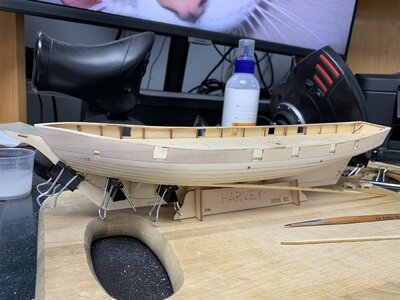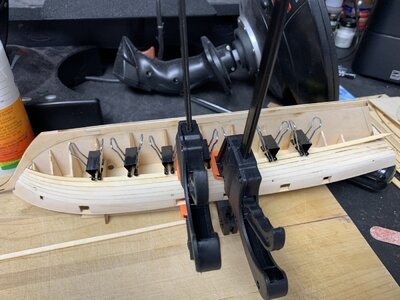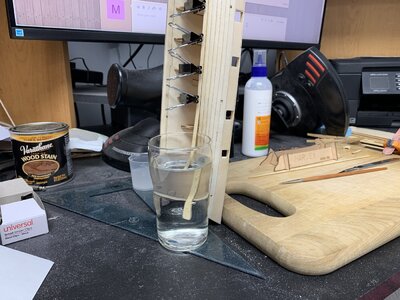Had to take a small break from building. I let my hands dry out too much with the change of weather and probably too much dish washing. That resulted in very dry skin that then split on my right thumb. The tiny little split kept bleeding onto the model, so I paused building and went for moisturizing and letting my hands heal a bit. But here is the re-start with the next plank! Doing both sides at the same time. I also ordered some brown acrylic to try touching up and/or re-doing the cannon carriages as recommended by a "neighbor."
I can't believe anyone did not give advice on shellac! Does no-one know? Was it just a stupid idea to start with? Or is it just that no-one that is knowledgeable about shellac has wondered through this thread?
Cheers,
M.
I can't believe anyone did not give advice on shellac! Does no-one know? Was it just a stupid idea to start with? Or is it just that no-one that is knowledgeable about shellac has wondered through this thread?
Cheers,
M.







